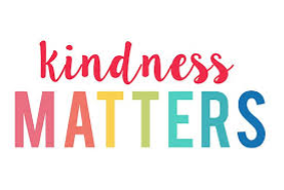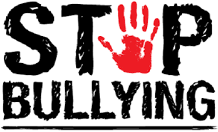About
SNACS Bullying Policy
Report an Incident
Please use this form to report a bullying incident or the print version here.
SNACS Policies & Procedures
- Bully Policy
- Discrimination
- Safe Respectful Learning Environment
- Gender Identity
A Safe and Respectful Learning Environment
All students have the right to attend and learn at school in a safe and respectful learning environment. SNACS is a Bully Free Zone and expects ALL students, family members, and staff to behave in ways that promote school community using kindness. Kindness matters. All students, family members, and staff are expected to work together to teach our students how to treat each other in all environments, and especially at school. This guide provides guidelines for students on school rules, kindness and what it looks like, breaking school rules and what to do about it, and identifying and addressing bullying concerns.
School Rules
- Self-to-self
- Follow instructions
- Show respect for others and property
- Be safe Life Rule Be Kind!
Kindness Matters!
Everyone appreciates being treated with kindness. Treating others with kindness feels good. There is often negativity and violence in the news and world around us. Kindness can make a difference to the people around us. This has a ripple effect that can change the world. We have an opportunity at SNACS to show and receive kindness. We are starting a Choose Kindness campaign to help students recognize and practice acts of kindness. Start today and be kind!
Simple acts of kindness:
 Smiling.
Smiling.- Saying hello.
- Use please and thank your words.
- Telling someone they did a good job or worked hard.
- Talking with someone who seems alone outdoors.
- Inviting someone to sit, play, or work with your group.
- Helping someone who is struggling with a task.
- Sharing.
Unkind words and bothering fellow students
Using unkind words or bothering another student does not necessarily constitute bullying. It is unacceptable to use unkind words and bother fellow students. Students will receive consequences according to the discipline policies and legal requirements.
What do you do if someone is unkind to a fellow student?
- Tell them: “STOP! Your words are unkind and hurt my feelings. Be nice. I am nice to you.” 2. If it stops, then move on and be kind to one another.
- If unkind behavior continues and you have tried talking it out, then tell a teacher or other adult in charge of the classroom or outdoor area you are located. If it occurs outdoors and you tell the adult on duty, also tell your teacher when you get back to the classroom. SNACS Safe and Respectful Learning Environment
- If the unkind behavior continues, come to the office to report the issue. You will write down your concern on a form. Mr. John will be notified and will follow-up with you and your parents. Please note: We are working on a safety team of student leaders who will be trained in assisting solve minor problems on the playground. Students will be able to talk over minor issues or concerns and the safety monitors will help problem solve, seeking adult help when necessary.
What do you do if someone is bothering a fellow student (following, mimicking, etc.)?
- Tell them: “STOP. Your words are bothering me by ______. I would like you to ____________ instead.”
- If it stops, then move on and keep working.
- If the bothering behavior continues and you have tried talking it out, then tell a teacher or other adult in charge of the classroom or outdoor area you are located. If it occurs outdoors, tell the adult on duty, also your teacher when you get back to the classroom.
- If the bothering behavior continues, come to the office to report the issue. You will write down your concern on a form. Mr. John will be notified and will follow-up with you and your parents.
Breaking Self-to-Self
Breaking self-to-self in an isolated occasion or against different people does not necessary constitute bullying. It is unacceptable to break self-to-self. Students will receive consequences according to the discipline policies and legal requirements.
What do you do if a student is breaking self-to-self?
- Tell the: STOP! Do not touch me (or slap, hit, kick, push, grab, pull, etc.).
- Tell a teacher or other adult in charge of the classroom or outdoor area you are located. If it occurs outdoors and you tell the adult on duty, also tell your teacher when you get back to the classroom if you have not been to the office already.
- You will write down your concern on a form. Mr. John will be notified and will follow-up with you and your parents.
Bullying

Bullying is behavior that is serious and beyond isolated incidents. There are laws that govern bullying and certain procedures and timelines are legally required with any bullying concern. Bullying generally (but not exclusively) exhibits the following features:
- Is it a deliberate action – the desire to hurt someone is intentional rather than accidental. Is it targeting a protected class (targeted because of race, ethnicity, gender, age, religion, etc)
- It is unfair – the person/people doing the bullying is/are stronger; more powerful or has a higher status than the target of the bullying.
- It is repeated over time.
The legal definition involve examination of three areas:
- Harm and/or protected class (targeted because of race, ethnicity, gender, age, religion, etc.)
- Notion of Welcome
- Severity, persistent, and/or pervasive SNACS Safe and Respectful Learning Environment
Questions to consider when determining if bullying is occurring
- Did harm occur? Was there an intentional act that caused physical or emotional harm? Is the behavior toward the victim related to a protected class (race, ethnicity, gender, age, religion, etc.)?
- Is the behavior welcome? Consent doesn’t constitute welcomed by recipient—sometimes there is pressure based on one’s perceived authority over another. Ex. An older student pressuring a younger student to consent to a game involving physical contact.
- Is the action severe, persistent, pervasive?
- Severe: can include a singular act or be over time
- Persistent: does it occur more than once? Repeatedly?
- Pervasive: is there an effect on a group or community? (ex. Cyberbullying and then carries over into school) Please note: cyberbullying that occurs outside of school that does not carry over into the school may still be cyberbullying, but the school may not have authority to oversee the acts. Families may wish to work with other families or contact law enforcement agencies for assistance.
What do you do if a student may be bullying another student?
- Tell the student: STOP! Do not ______________.
- Tell a teacher or other adult in charge of the classroom or outdoor area you are located. If it occurs outdoors and you tell the adult on duty, also tell your teacher when you get back to the classroom if you have not been to the office already.
- You will write down your concern on a bullying concern form. Mr. John, Mr. Schoenfeldt, and Dr. Regan will be notified and will follow-up with you and your parents following the bullying requirements.
- A formal investigation will occur. The investigation will be documented. All persons involved will receive official findings in writing. Documentation will be entered in Infinite Campus. Consequences will be implemented and documented.
Safe and Respectful Learning Environment is a School Wide Approach
Bullying will not flourish in an environment that actively promotes positive relationships and has a proactive antibullying policy. Lack of intervention tells those who bully and the targets of their bullying that this is an acceptable form of behavior. Lack of action is the same as granting permission. A whole school approach is necessary. Changing attitudes and reactions to bullying behavior (adults and children) will reduce incidents. SNACS proactively works to ensure a safe and respectful learning environment that is bully-free.
- Proactive approaches to anti-bullying via clear behavior expectations, rules and consequences, signs, counselor and teacher class meetings/discussions, individual behavior plans and consultation as necessary, 5-star & Golden Rules, and appropriate rewards and consequences.
- Policies, intervention, and consequences.
- Campaigning (and revisiting during National Violence Prevention – March).
- Promote kindness.
- Role playing, scenario discussions that challenge children’s perception.
- Instilling an ethos that encourages all students and families to take responsibility for reporting bullying incidents they may witness (website, bully box in front office).
- Whole school attitude on safe-school environment – and environment that looks and feels safe and instills pride in students.
- Encourage parent involvement and resources about bullying prevention and reporting (website and in office). Whose job is it to monitor for bullying? Everyone! Administrators, teachers, assistants, and support staff members job is to observe, listen, act, report and document– without judgement. Families job is to communicate with teachers any concerns and administration as warranted.
Educational Personnel are responsible to:
- Expect and support a bully free zone.
- Observe – (bullying acts are not always reported, be cognizant of students and student behavior).
- Listen (do not lead the reporter or paraphrase – get their report of facts as they perceive).
- Act (respond according to protocols and act as necessary).
- Be consistent.
- Document and report (fill out paperwork related to incidents within an hour of hearing, immediately for more serious). Required Administration Protocols:
- Investigation of an incident that may involve the three circumstances (which can include a criminal investigation, but criminal does not replace the admin investigation) within the 10-day window
- Documentation and reporting – at onset of incident if all 3 circumstances exist, clock starts 10 days requirement.
- All families of persons involved are notified in writing at the onset of investigation.
- Follow Bullying Incident Investigation Checklist.
- Conduct investigation – complete the incident intake and analysis forms.
- Gather documentation from all students involved.
- Convene the Multi-Disciplinary Review Team (MDRT)to review documentation and make determination (MDRT – on-site team involving select SNACS staff)
- Complete the Bullying Results and Conclusion Form – determine bullying, harassment, and/or discrimination.
- Notify all parents of results of investigation and consequences in writing.
- Complete Actions Taken Form
- Report in IC and send copies to WCSD, Legal, Student File, etc.
- Ongoing PD training and bullying prevention overviews in classrooms (with the help of our school counselor), teachers will continue conversations and team meetings with students
- Interventions where necessary (small groups via counseling)
Definitions
Physical can include: slapping; punching; pushing; kicking; hitting; pulling hair; twisting arms; tripping; throwing objects; stabbing with a pencil or other objects; demanding something through force; biting; wiping food or other substances; bodily fluids contact; burning; branding; picking; plucking; forcing food, liquid, or other substance ingestion; etc.
Emotional can include: spreading malicious rumors; teasing; calling names; blackmailing; making offensive comments; ostracizing; drawing pictures; writing words or symbols; drawing or distributing inappropriate pictures or words; dismissive glances; glaring; hand gestures; using put-downs; humiliating; making threats (verbal or non-verbal); threatening persons’ family, friends, or property; embarrassing; ostracizing; excluding from activities; persuading others to gang up on someone; hiding or stealing someone’s property; following; mimicking; mocking; stalking; etc.
Cyber-bullying can include: the use of electronic communication to transmit or distribute inappropriate words or images through an electronic device not limited to a computer, cell phone, telephone, gaming device, etc.
